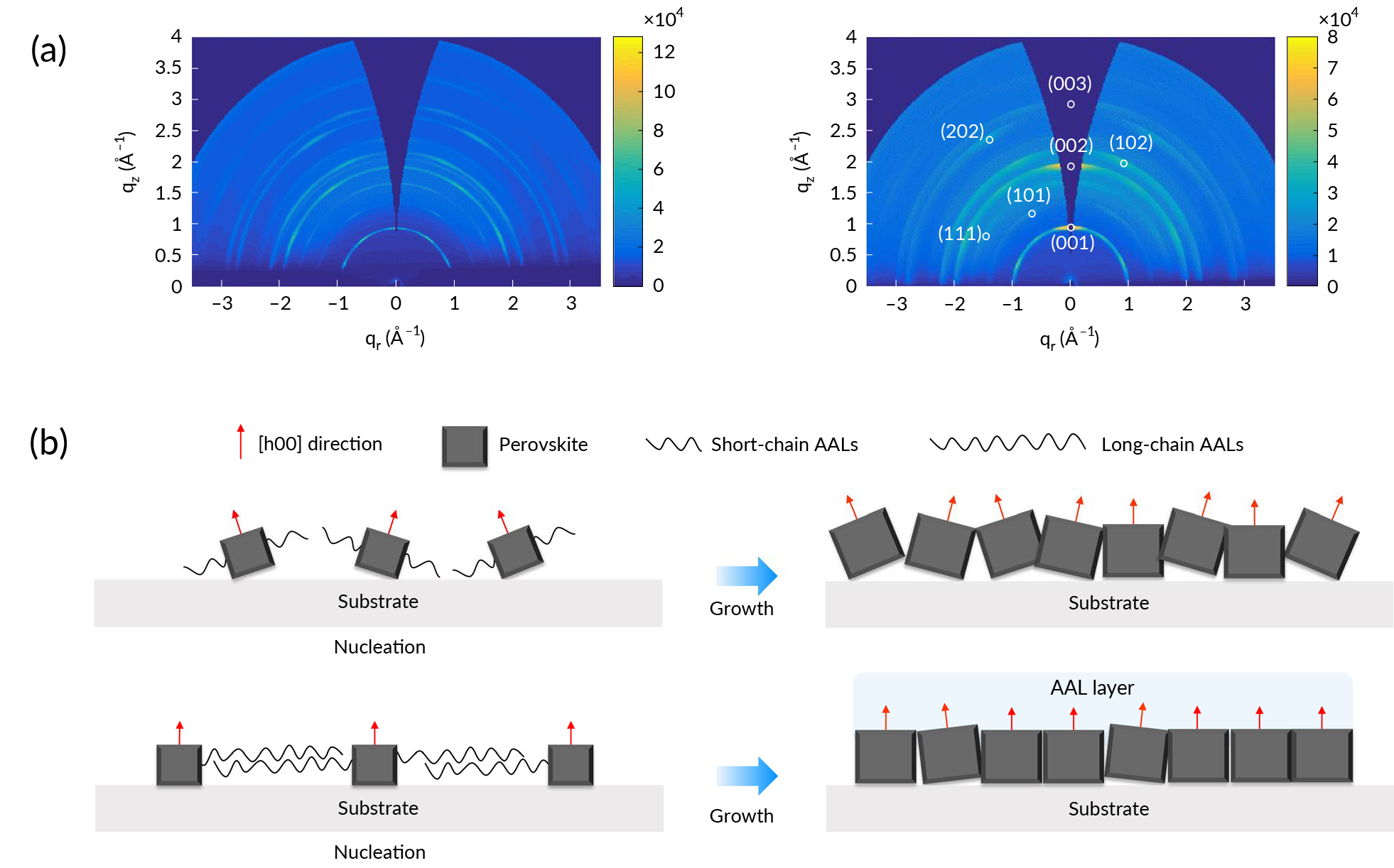Polycrystalline perovskite thin films are solution-processable semiconductors with strong light absorption, high defect tolerance, high charge mobility, and long carrier diffusion lengths—attractive properties for photovoltaics. In fact, metal halide perovskite solar cells (PSCs) have rapidly improved in power conversion efficiency (PCE) over the last decade, from 3.8% to 25.2%.
There are two main types of PSC configurations: regular (n-i-p) and inverted (p-i-n), where n, p, and i refer to layers of n-type, p-type, and intrinsic semiconductors. Regular-structure devices have the highest efficiencies, but they incorporate unstable ionic dopants that cause their performance to degrade significantly over time. Inverted devices retain their performance for much longer periods, but their PCEs lag significantly (20.9% vs 25.2%).
To improve inverted-structure efficiencies, researchers modified the perovskite precursor solution by adding trace amounts of alkylamine ligands (AALs), surfactant-type molecules with “tails” of hydrophobic chains. The hypothesis was that the chains could help align the films’ grains and interfaces, improving their structural and optoelectronic properties.
Grazing-incidence wide-angle x-ray scattering (GIWAXS) at ALS Beamline 7.3.3 was used to probe the surface of the resulting perovskite thin films. Analysis of the data confirmed that the additive promoted (100) grain orientation, with long chains performing better than short chains.
The work translated into a certified stabilized PCE of 22.3%, a record for inverted PSCs. Moreover, the resulting devices operated without loss of efficiency for at least 1000 hours under simulated sunlight. Further understanding of the different surface facets in polycrystalline perovskite, including defect type and concentration, will likely be essential for the future of perovskite devices.

X. Zheng, Y. Hou, C. Bao, J. Yin, F. Yuan, Z. Huang, K. Song, J. Liu, J. Troughton, N. Gasparini, C. Zhou, Y. Lin, D.‑J. Xue, B. Chen, A.K. Johnston, N. Wei, M.N. Hedhili, M. Wei, A.Y. Alsalloum, P. Maity, B. Turedi, C. Yang, D. Baran, T.D. Anthopoulos, Y. Han, Z.‑H. Lu, O.F. Mohammed, F. Gao, E.H. Sargent, and O.M. Bakr, “Managing grains and interfaces via ligand anchoring enables 22.3%-efficiency inverted perovskite solar cells,” Nat. Energy 5, 131 (2020), doi:10.1038/s41560-019-0538-4.